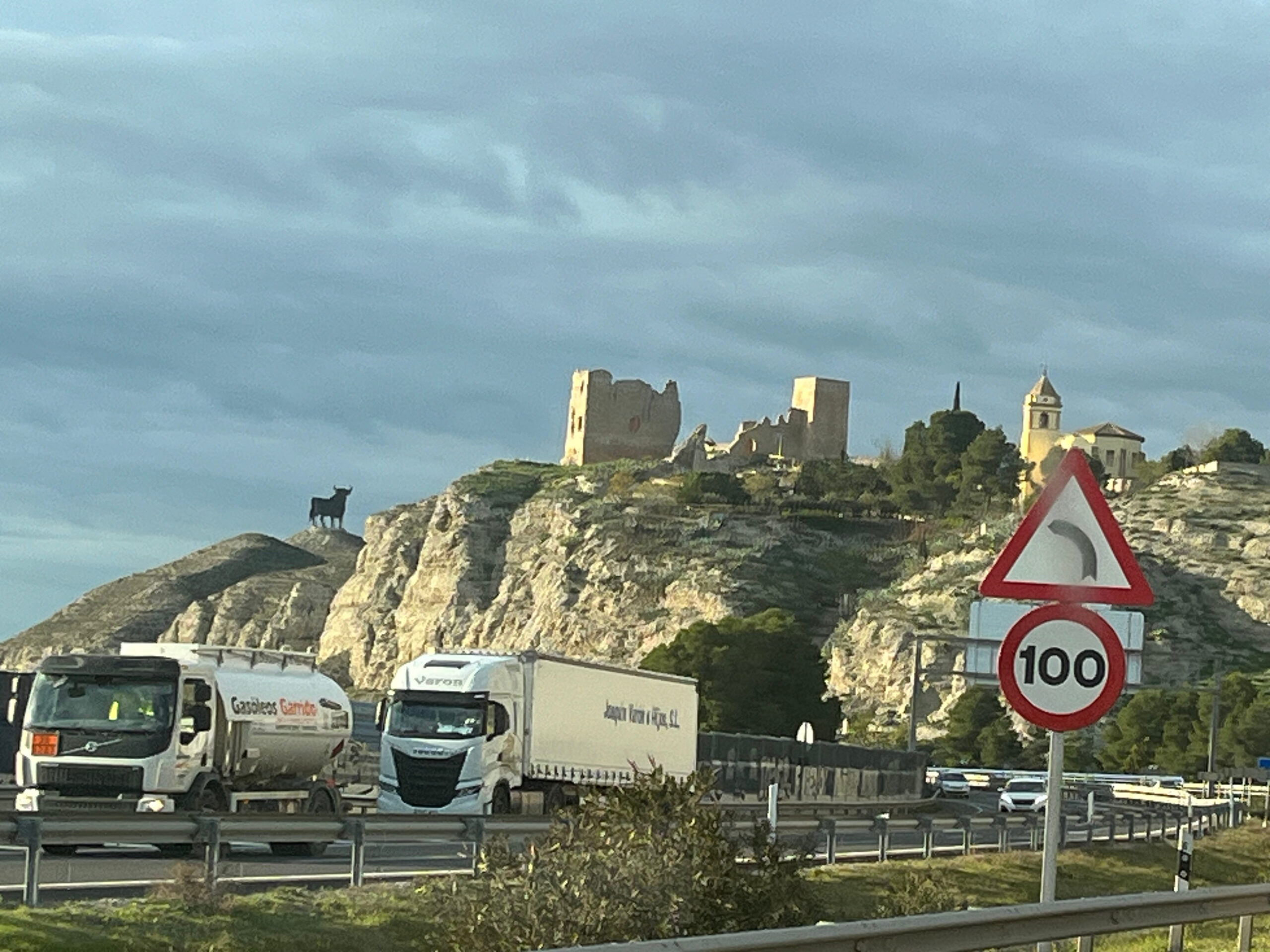Southern France kept us busy until mid November, but we had a flight booked for the 12th of December from Malaga, so with a bit over 3 weeks to go it was time to make a move.
Our original plan had been to go straight over to Portugal and work our way south along the Atlantic coast but there was no time left for that.
The straight forward way to go from Perpignan to Malaga would have been to follow the Mediterranean highway but so far my trips to the Mediterranean coast of Spain have left me underwhelmed.
I find the touristic exploitation in terms of high rises lining the coast quite disturbing. Also this is said to be where european pensioners in campervans and caravans gather in huge flocks and rest motionless to fry in the sun, waiting for better weather in their home countries.
So we decided to give the Costa Brava and Costa Blanca a miss and after crossing the Pyrenees set course via Saragossa, Madrid, Toledo and Cordoba to Malaga.
Our first night was spent in Vic, which is not exactly a place you have to see, but it was the first Spanish town we actually stopped in so we were still easy to impress.
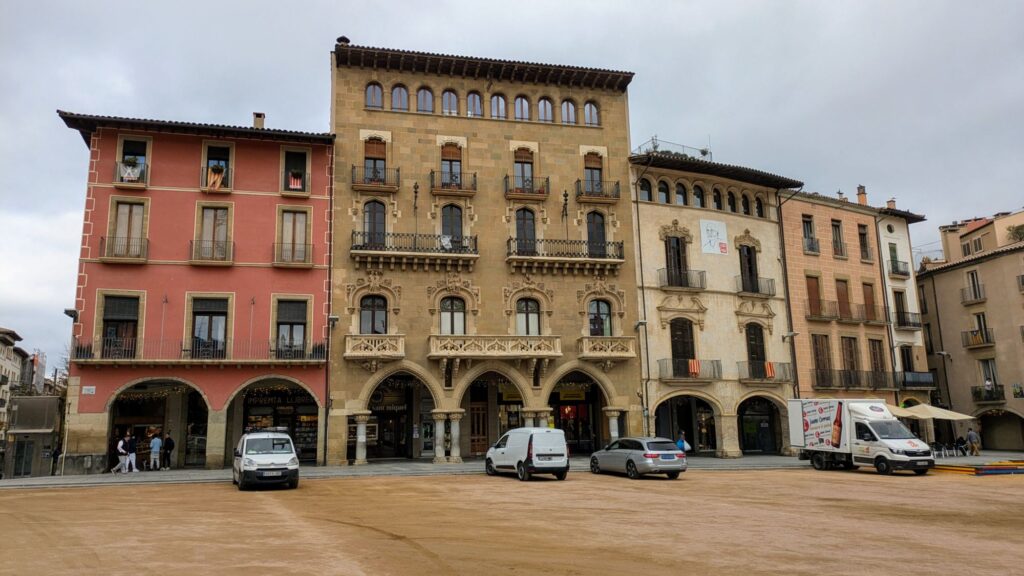
Moving on towards Saragossa we passed the Mountains of Montserrat. We couldn’t make up our minds to get off the highway and go there so we kept going. We have been regretting it ever since because it looks amazing from the distance.
Saragossa was a nice find. It has a huge Cathedral, a moorish palace, some roman ruins and a Hundertwasser house amongst tons of other impressive sights to see.
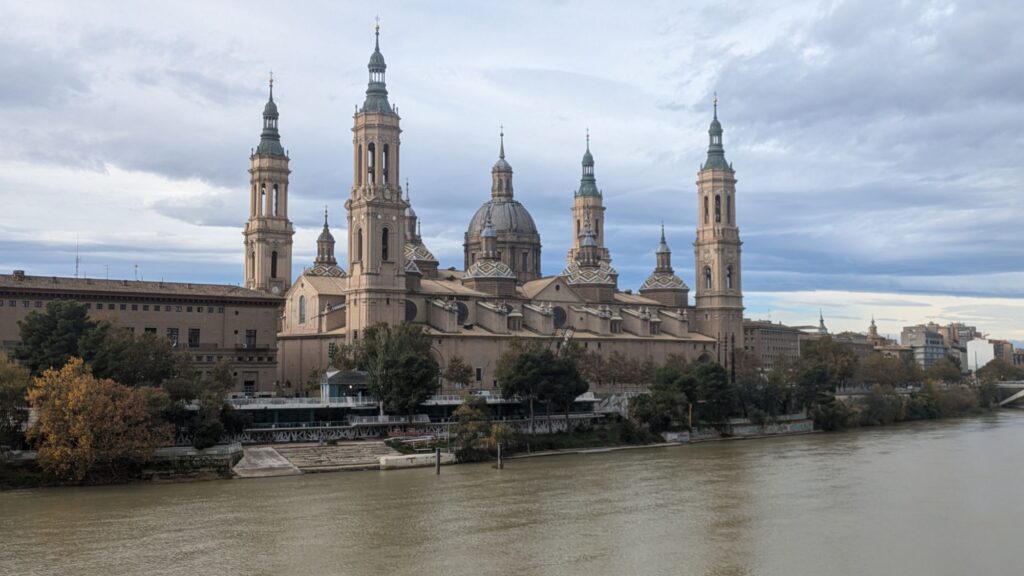
Moving further west towards the center of Spain we stumbled across the Roman ruins of Bilbilis. The road that leads up to the site is very steep and partly overgrown. Regardless of its lack of popularity the site is pretty and nicely documented. There is lots to learn about the roman and goth culture. The site also has beautiful views over the valleys.
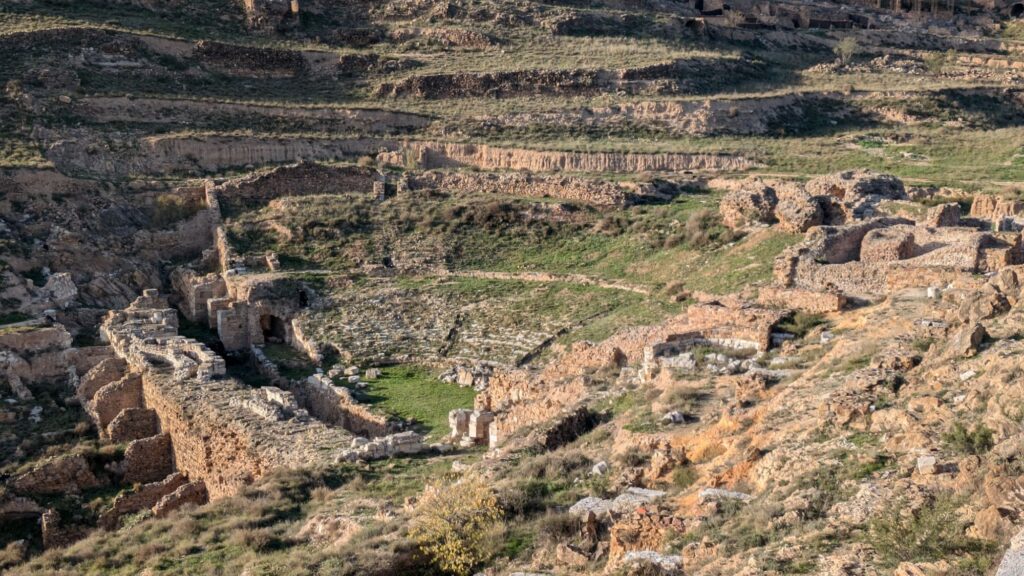
It became our first overnight parking in the wild in Spain
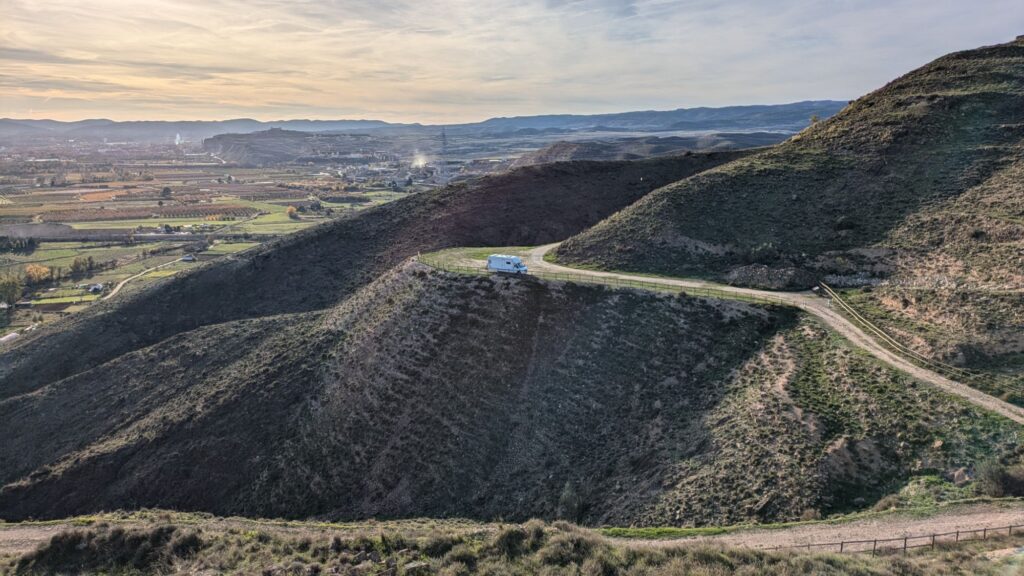
Next stop was El Burgo de Osma – another random find on the way to Madrid. The town has a beautiful old centre, an impressive Cathedral and is well worth a stop over.

Just 15 min away is the gorge of the Rio Lobos which offers excellent opportunities for biking and hiking.
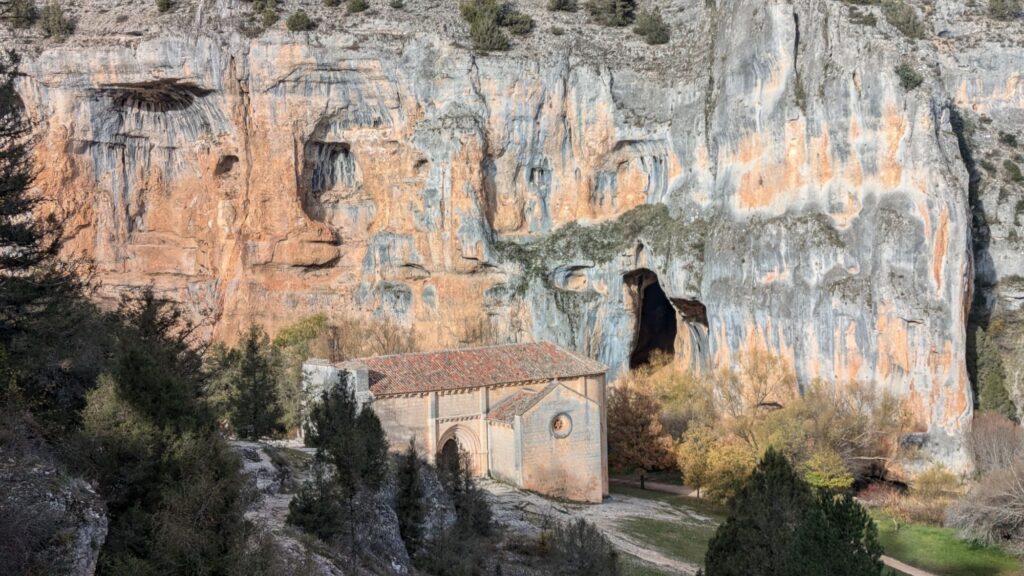
Main problem with going through the centre of Spain was the cold. On the way from Saragossa to Madrid you are travelling through mountainous territory and you are generally at altitudes of a 1000 meters or more. As a result it gets very cold as soon as you are out of the sun and specially at night. As we were still on the last of our German gas and had not managed to get access to Spanish LPG yet we were trying to use as little gas as possible, so we were avoiding using gas for hot water and heating. A lot of the time we would wake up in the morning in a cosy bed but in an ice cold van. The best option in that situation was often to get the van moving to heat it up.
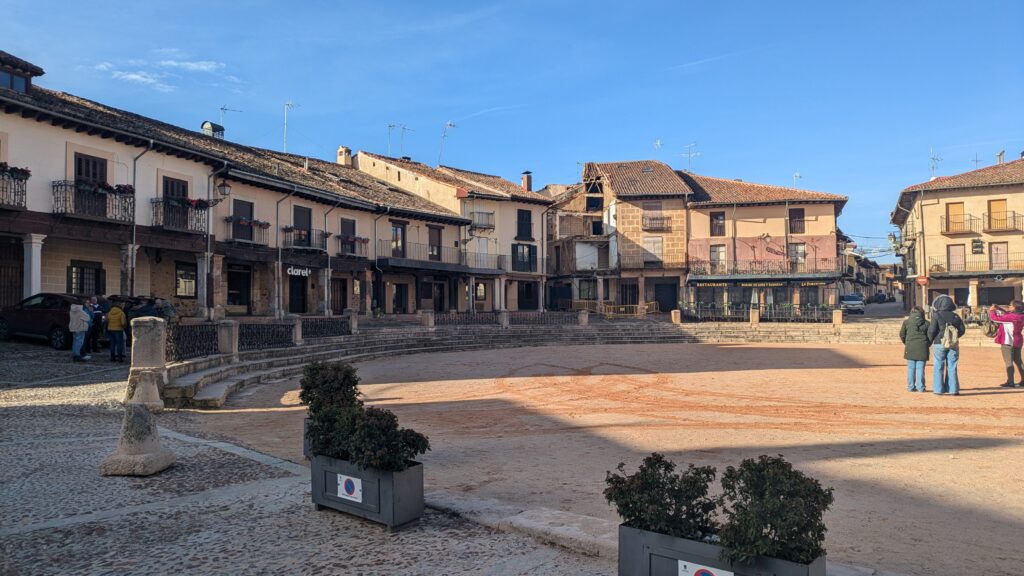
Our next stop Riazza was one of these places. A big campervan like ours has a lot of windage and strong gusts from the side like in the ones we had on the way to Riazza sometimes almost blow you of the road. Our main reason to stop in Riazza was that we had enough of being bullied by the wind an needed some rest. The town is quite pretty and lies at the foot of a interesting looking mountain range with tons of hiking opportunities. If only it had been warmer..
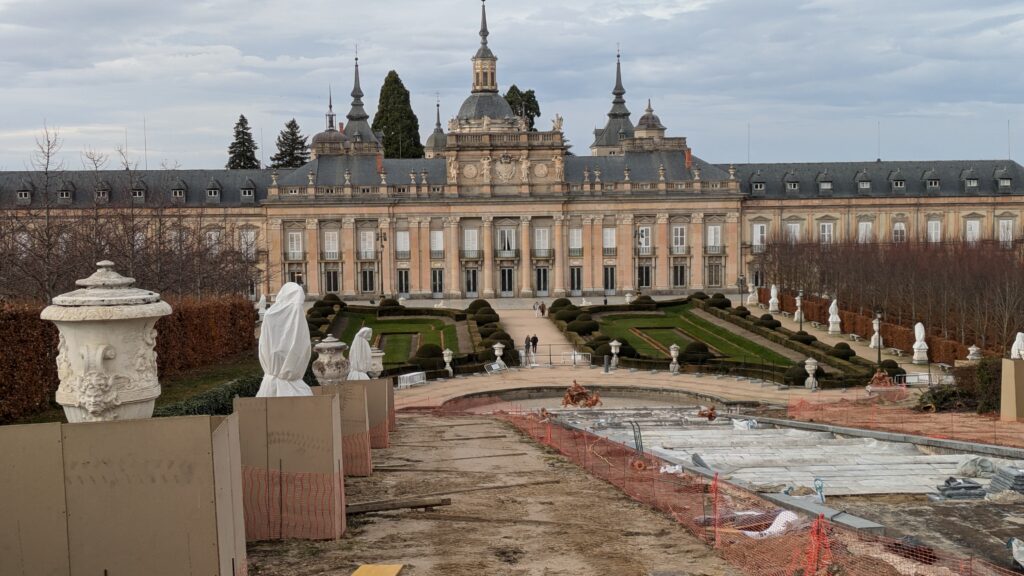
We were now closing in on Madrid and started to graze of the interesting towns that circle in the north-east, first of which was San Ildefonso – the site of a summer palace of the kings of Spain. The palace has some very remarkable architectural features. You walk through sheer endless fleets of rooms – each one featuring a different theme or purpose. The palace gardens are huge. Close to the palace you find very organized gardens with pools, fountains and statues. As they climb up into the hills they become more and more foresty. A lovely place to escape the summer heat in Spain – not so cosy in winter though.
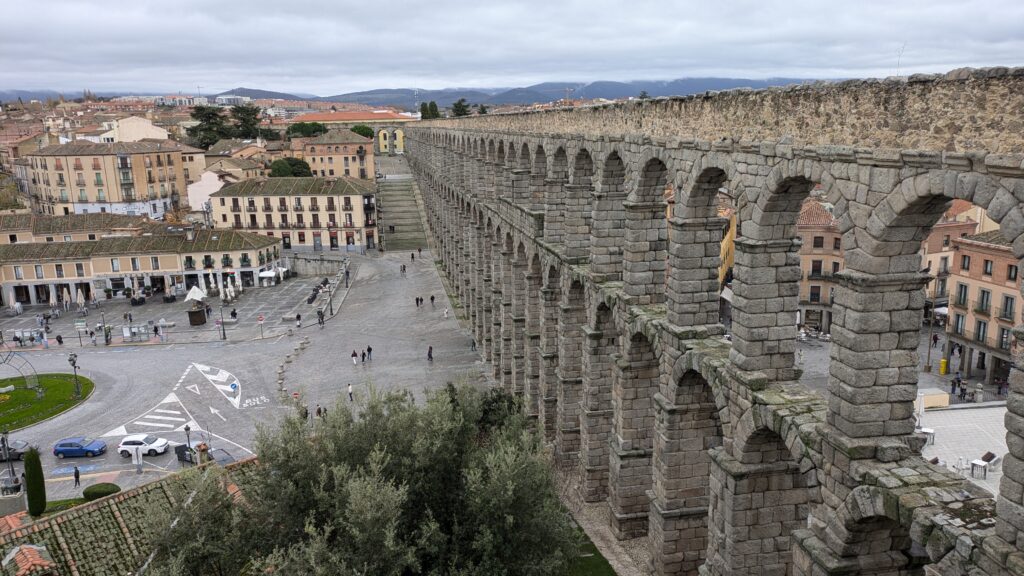
Next stop was Segovia. Also a town with a lot of history. It features a huge very well preserved roman aqueduct crossing town and ending in the beautiful fortified old town.
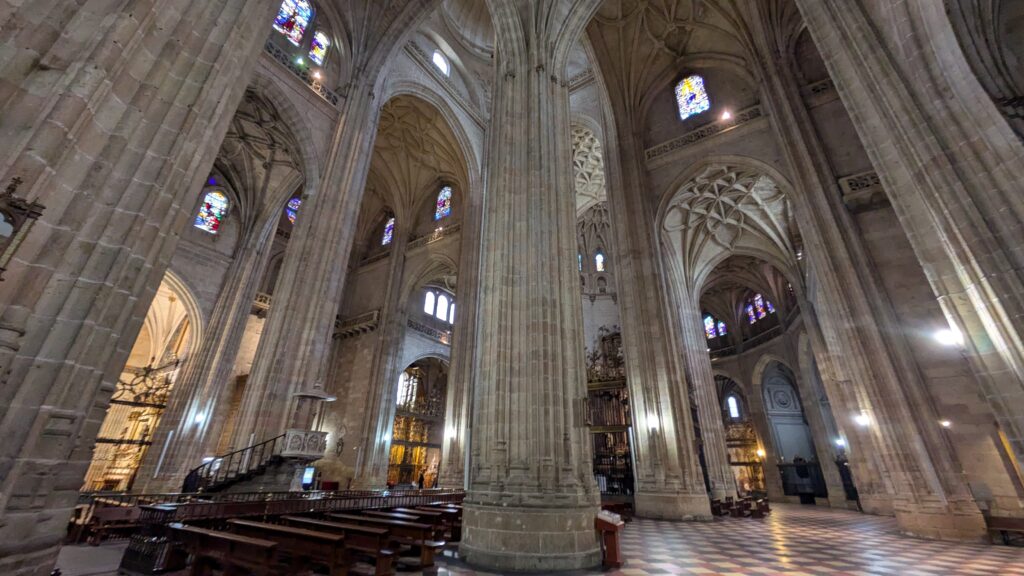
As usual there was a stunning cathedral to be visited as well as an impressive Alcazar (fortress) which is a UNESCO Wold Heritage site and has played a significant role in Spanish history.
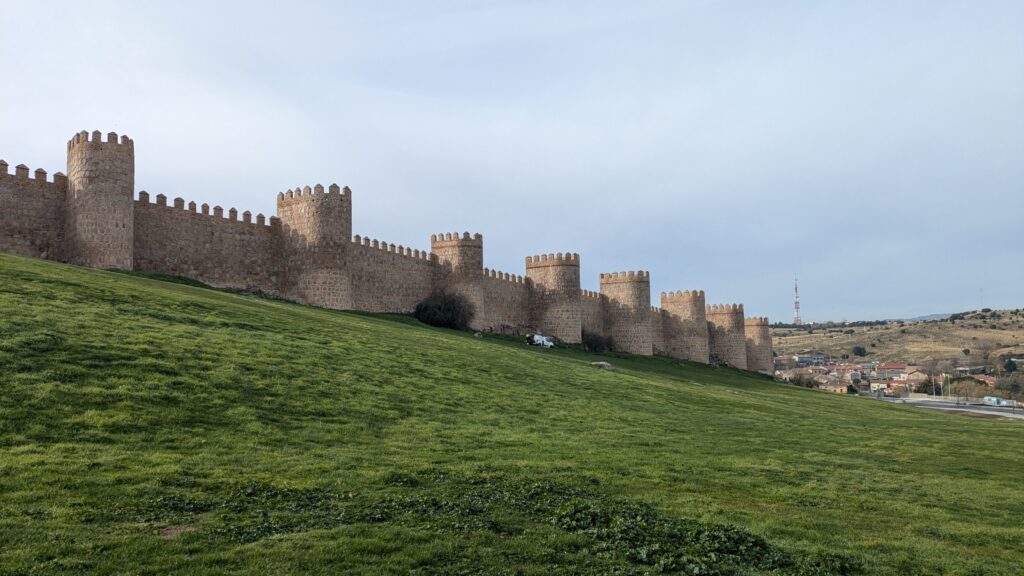
Last stop before heading to Madrid was Avila. Another fortified town with a massive and complete wall that surrounds a huge area of town. At 1130 m above sea level it is the highest provincial capital of Spain it is also called the town of stones and saints – for the walls for one and the highest number of Romanesque and Gothic churces per capita in Spain. We were specially impressed by the Real Monasterio de Santo Tomas – a monastery that also served as the royal palace.
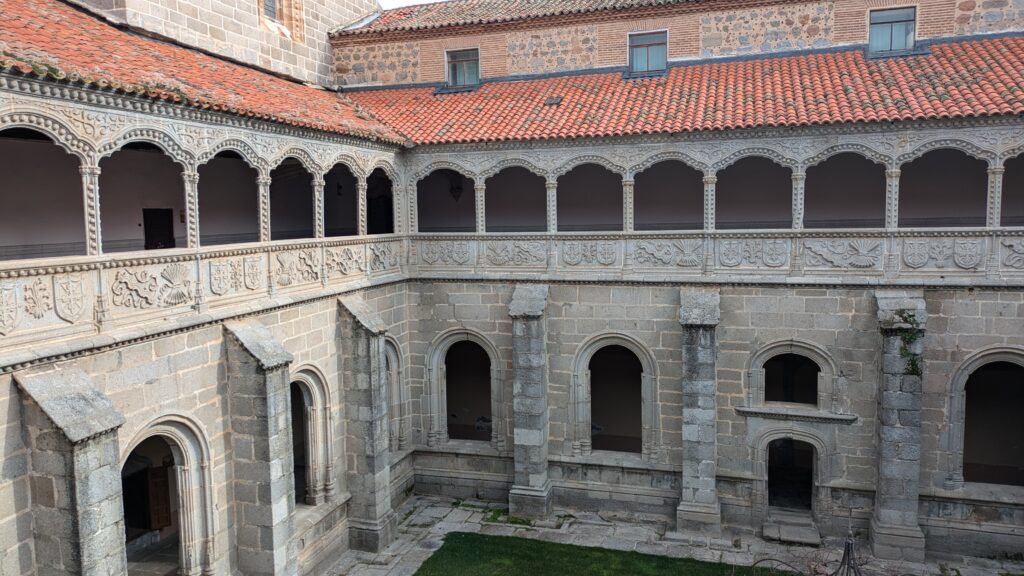
Madrid – finally. We had high hopes set on Madrid. The cultural part – visiting one of the greatest cities of Europe and also we were expecting to to finally solve our gas problems and be able to enjoy a nicely heated van and hot showers whenever we wanted.

On day one we rode our bikes into town. We had noticed before that a lot of Spanish towns are quite bike-friendly specially around their universities and living areas. In the old town centres it is a different story – In a lot of places you have to leave your bike behind, but there is nothing to lock it on to.

Relieve de Francisco Pizarro (Palacio de Comunicaciones)
As Spain does not have the best reputation for theft and we had already had an attempt on our bikes in France, that left us quite worried about the safety of our bikes. In the end we returned to the van early and decided to use public transport to return to the centre later in the afternoon.
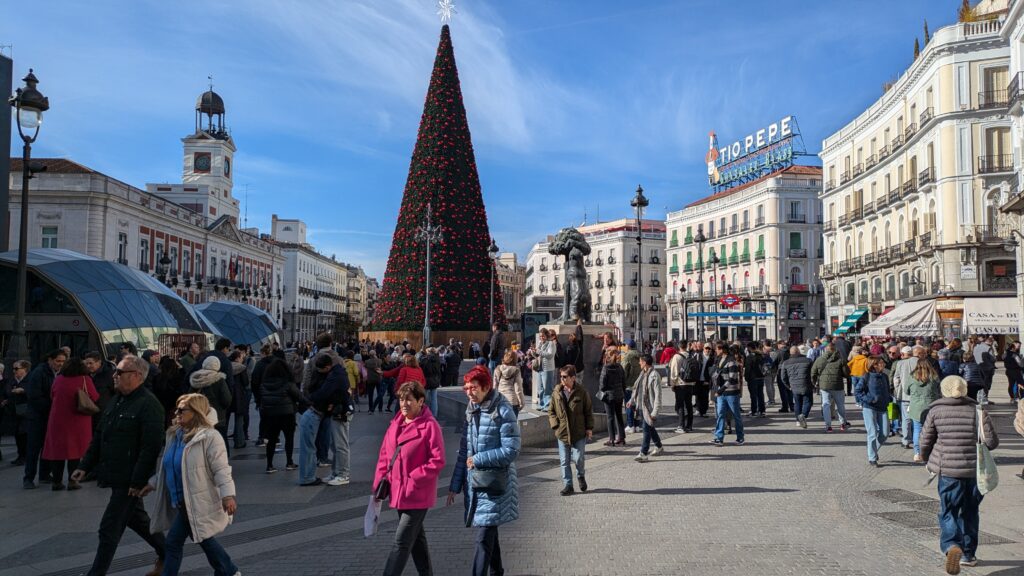
Truly Spanish towns really awake to life after 5 pm. Even in winter when it gets dark and awfully cold as soon as the sun goes away, the streets are suddenly filled with people shopping or going out – even sitting outside. It seems like you can walk from the centre of Madrid endlessly in any direction and still be on streets full of people, restaurants, bars and shops.
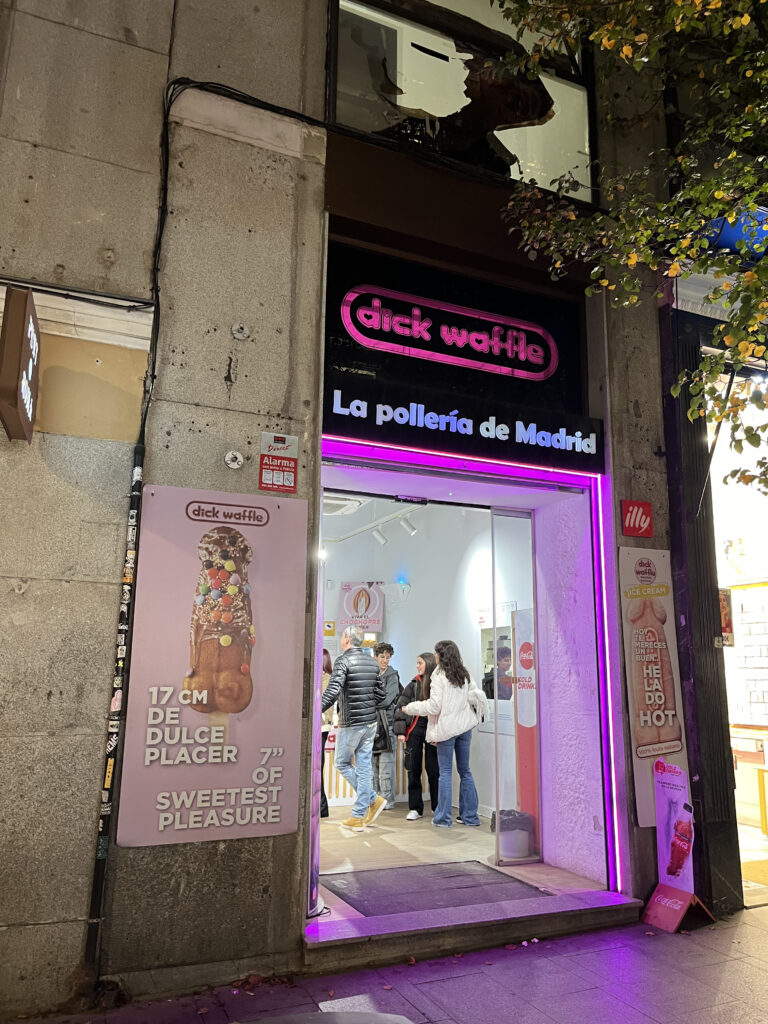
We did some more exploration on bike the next day and finally managed to find a second hand shop that had a gas bottle for us. The owner did not admit it at first and was sending us away. Only after some lamenting about our desperate situation did he remember that he might have a 6 kg butane tank somewhere. It was half full, changed ownership for 15 € and kept us warm for quite a while.
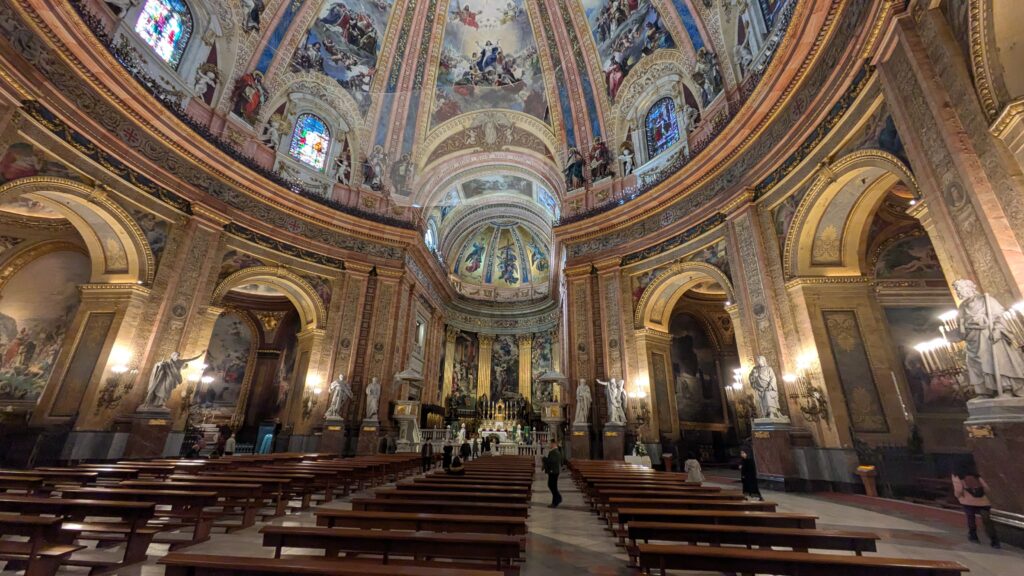
One of the questions that springs to mind when you wander through all the cathedrals, monasteries, castles and palaces in Spain and admire their vastness and riches and the excess in artwork, gold and silver, is how they paid for it. It becomes very obvious what amounts of silver, gold and other wares they must have shipped from the colonies to finance all this. All over Europe we have been admiring the beauty of castles and artwork of royal families or just local rulers. All of this was only made possible by the hard and often involuntary labour of their serfs, slaves or of oppressed people in the colonies.
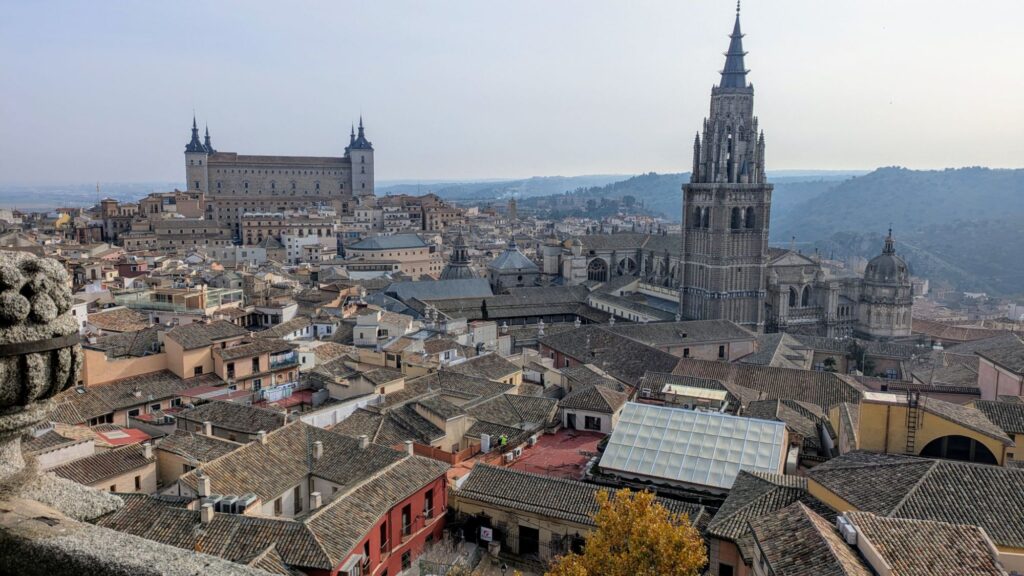
Next on the list was Toledo. Another beautiful old town full of royal palaces, cathedrals, monasteries and fortifications. It actually becomes a little overwhelming and after Toledo we were clearly ready to spend some time away from the splendor of the Spanish rulers and the catholic church and ready to spend some time in nature.
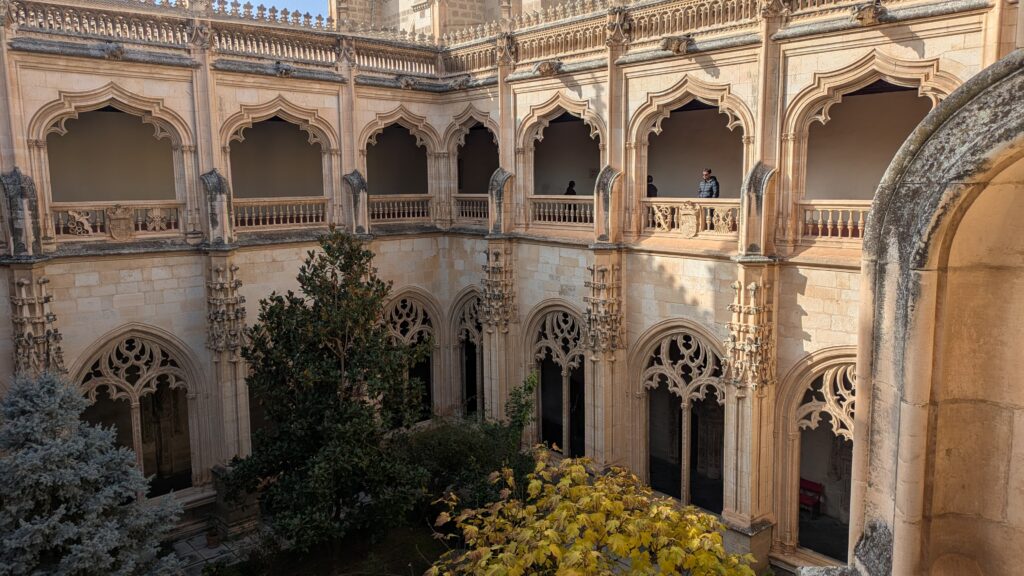
Heading south-west we found the Parque National de Los Cabaneros. I was hoping to find some nice hiking and mountain bike tours there and Gaylyn had a conference to attend (online) so we needed a comfy place with power internet and some creature comforts like hot showers.
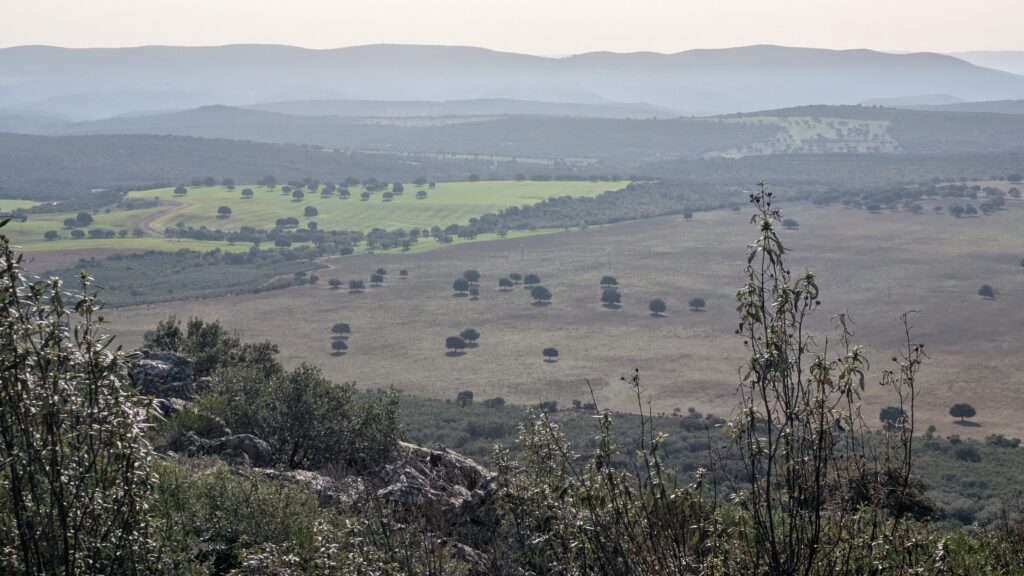
Turns out that mountain biking in Spain is not for the faint of heart. The terrain is generally a lot steeper and rougher than the North German lowlands that I come from. When it gets steep the tracks often deteriorate into rock slides and become so hard to navigate that you are not really faster than on the way up. Looking for tracks on Komoot or on hiking apps can be quite deceiving. Some of the bike tracks I selected on Komoot, while rated as intermediate were really geared towards electric bikers as the amount of fitness required to cover 50 Km in super rough terrain with some 1000 m in altitude strewn in are not doable for me on a bio-bike. Some
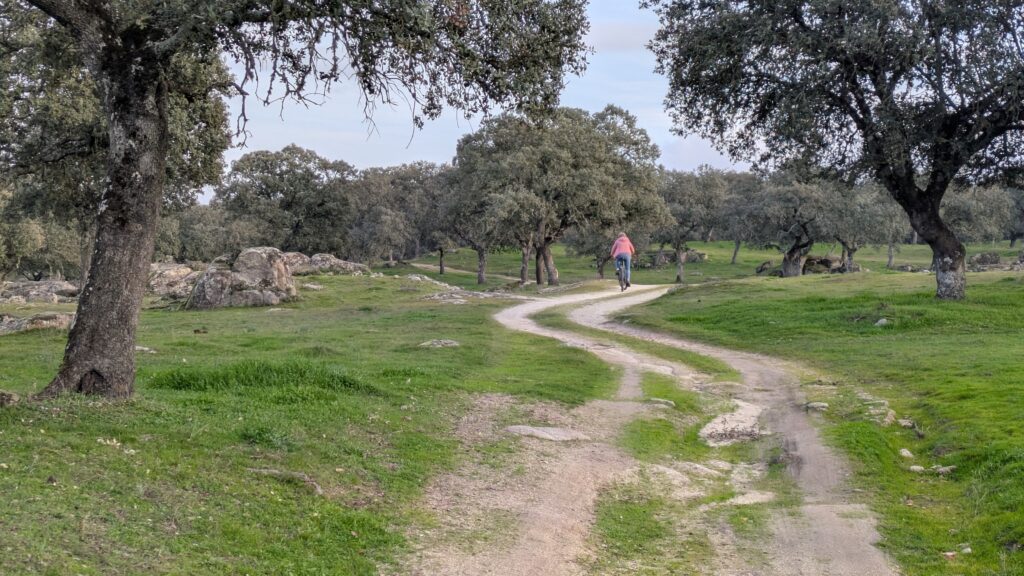
Thus ends our journey to the middle with the arrival in Cordoba.
